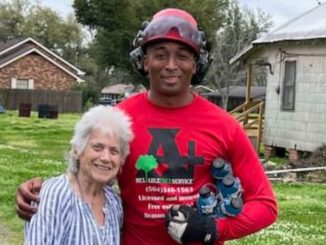
Lung association says breathing it can lead to death
The federal government has announced that the air in St. Charles Parish, as well as in 345 other counties and parishes across the nation, is too dirty to breathe, putting residents at risk for heart and asthma attacks.
To counteract that, the Environmental Protection Agency recently tightened the amount of ozone, typically known as smog, that will be allowed into the air. There were only five parishes in Louisiana that failed to meet the previous standard for ozone, which was 80 parts per billion. Now that the amount has been lowered to 75 parts per billion, 26 parishes will fail to meet that standard.
“This does not mean that the air quality is suddenly worse than it was before the action,” Lou Buatt, assistant secretary for the Louisiana Department of Environmen-tal Quality, said. “Some areas that will be classified as out of attainment will probably see some ramifications from this ruling. However, the air quality in Louisiana continues to improve and the department will continue to work for better air quality no matter what the standard is.”
Though the new smog limits were called “the most stringent standards ever” by EPA Administrator Stephen Johnson, the American Lung Association says they need to go even lower in order to reduce the negative health affects that smog causes across the country.
“We wish we could be happier about this decision, but we cannot,” ALA President Bernadette Toomey said in a statement. “We are unable to celebrate half measures when the risks are so evident, when the science and the scientists are so united about what is needed and when the missed opportunity means that thousands will suffer more and die sooner than they should.”
Toomey says that smog threatens the health of infants, children, seniors, and people who have asthma, emphysema, chronic bronchitis and other lung diseases. He says that for these people, breathing smog-polluted air can even lead to death.
“The EPA’s own expert scientific advisors unanimously recommended a stronger standard that would provide much more protection – advice the agency ignored,” Toomey said. “Sixteen major medical societies and public health organizations repeatedly urged the EPA to follow the overwhelming evidence for a truly protective standard.”
That standard was 60 to 70 parts per billion, well below the new standard the EPA just set.
It’s difficult to control smog because it’s not directly emitted into the atmosphere. Instead, it forms when oxides of nitrogen and volatile organic compounds are mixed in the air on a hot day.
“It’s not a chemical we can tell industries to turn off,” Louisiana DEQ spokesman Rodney Mallett, said. “What this new standard means is that we have a year to put a plan together of what we can do to help the state meet that requirement, and after that, the EPA gets a year to see if those steps would help lower the smog to 75 ppb.”
Mallett says its difficult to say what can be done now, because there are different implementations for different classifications. Some areas will be rated as severe, while others, like St. Charles Parish, will be rated as marginal to moderate.
“St. Charles Parish will not have to go through a hardcore implementation,” Mallett said.
There are several steps that can be taken to lower smog. One is a tighter air admission rule, though that only happens in severe areas. Some things are done everyday, such as vapor blockers on gas pumps. Industries that have workers who load gas can also use vapor recovery systems.
“In Baton Rouge right now, we have an extra $10 charge on a car’s tag that allows us to make sure the emission controls on the vehicle are working properly,” Mallett said. “Cars are one of the largest sources of ozone emission and the air quality has really gotten better in Louisiana in the last 20 years because of the use of cleaner gas and fuels.
And Mallett wants to be sure that the industry doesn’t get the blunt of the blame.
“Lowering the standard isn’t just on industry, but it is on everybody,” he said. “When the ozone is high, we send out a mass email to parish governments that warns people that they need to take some voluntary steps to help keep it low. This can mean telling people not to mow their yard or barbecue on certain days.”




Be the first to comment